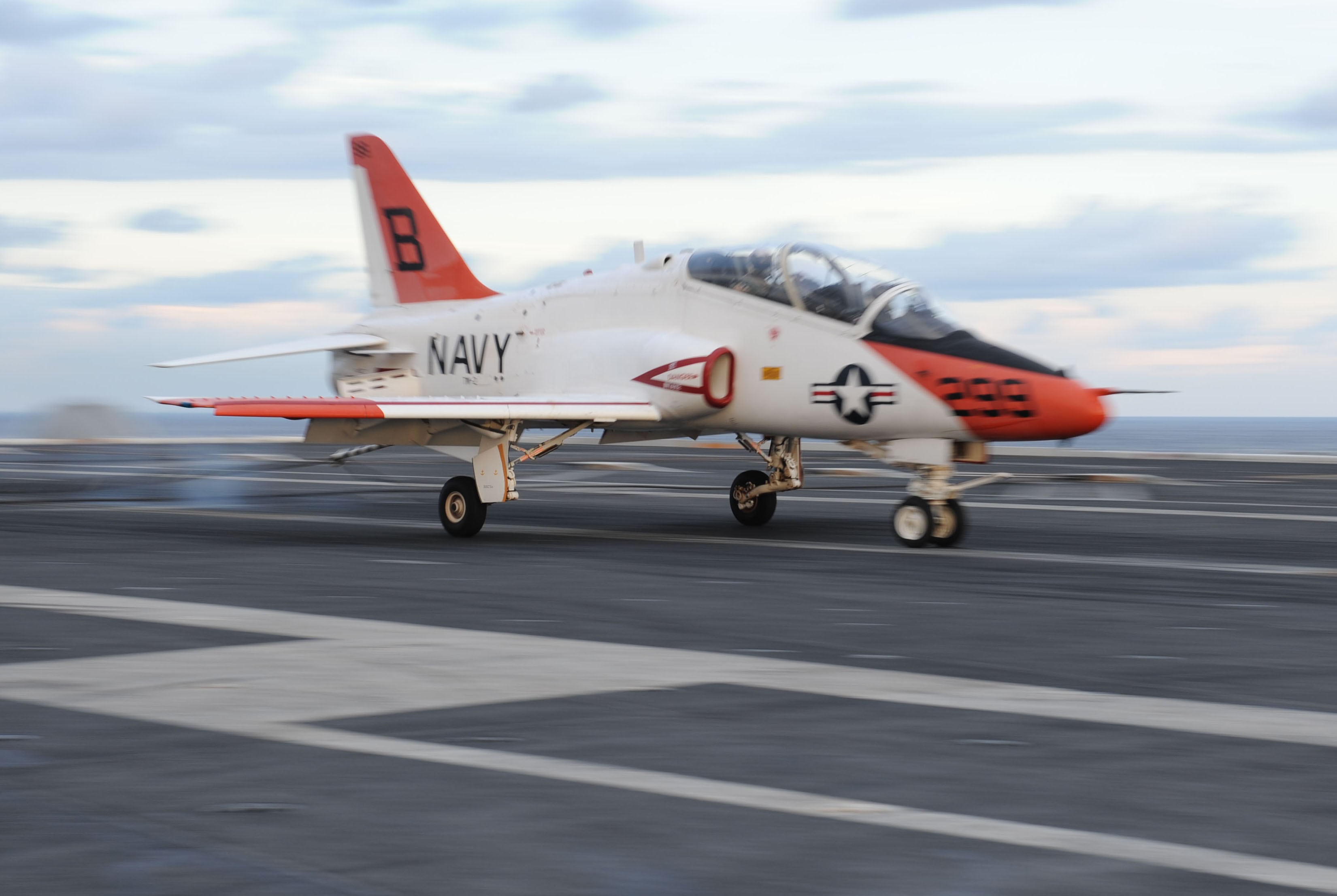The rate of frightening physiological episodes in the Navy’s T-45 training jets has plummeted in the past six months, the head of Naval Air Systems Command testified Tuesday.
The frequency of the so-called PEs, often hypoxia caused by a lack of oxygen at high altitudes, has dropped from its peak of more than three per month to about one per month today, Vice Adm. Paul Grosklags told a panel of the Senate Armed Services Committee.
“Since September, we have had a total seven incidents, seven physiological episodes since we resumed flying, basically one per month since then,” Grosklags said. “That’s the same rate we were experiencing back in 2012, 2013, 2014 when we started monitoring this issue closely.”
The drop in PEs among T-45s is welcome progress in the Navy’s ongoing fight to ensure that aircrews are safe in the air. The number of PEs in the T-45 aircraft peaked in 2016 at 38. In 2017 there were 21.
Two of the seven recorded PEs since last September were the result of mechanical failure, he continued.
“One was a flight in a regime that was a known issue when we get low flow through the aircraft. One was a pilot error. And three were human physiological issues where the pilot was either sick, had a sinus condition or some other condition.”

Hypoxia can cause pilots to become dizzy, disoriented and short of breath, and the issue had become so pronounced in the T-45s that last year a group of instructor pilots refused to fly the jets until their leadership addressed the problem. The Navy promptly grounded the jets and began a full-court press to fix the nagging issues, calling it the number one priority of naval aviation.
Grosklags attributes the drop in PEs to work done to identify certain conditions that cause reduced flow of oxygen to the pilot’s mask.
“One of the things that we found out, the primary thing we found out before we resumed flying last fall was that there are certain environments, conditions during flight where if the power is reduced to too low of a setting in flight, that it reduces the flow of breathing gas from the oxygen-generating system to the aircrew,” he said.
The Navy installed an additional sensor in the aircraft to identify when the aircraft is operating in those conditions. The service is still working on ways to boost oxygen flow in low-power conditions, he said.
Grosklags also testified that the Navy has not seen the same rate of failures in the T-6 single prop training aircraft as the Air Force, which in January grounded its fleet due to PEs.
“During the month of January and early into February, the Air Force had 19 physiological events in their T-6s, which is why they grounded the aircraft,” Grosklags testified. “During that same time period, the Department of the Navy had a total of two ... So, we’re staying in very close contact with the Air Force. We are taking steps with our T-6s to make sure we understand the environment.”
The Navy is working with the Air Force to replace the oxygen system, including some new sensors that will allow the Navy to monitor the system in flight.
David B. Larter was the naval warfare reporter for Defense News.





